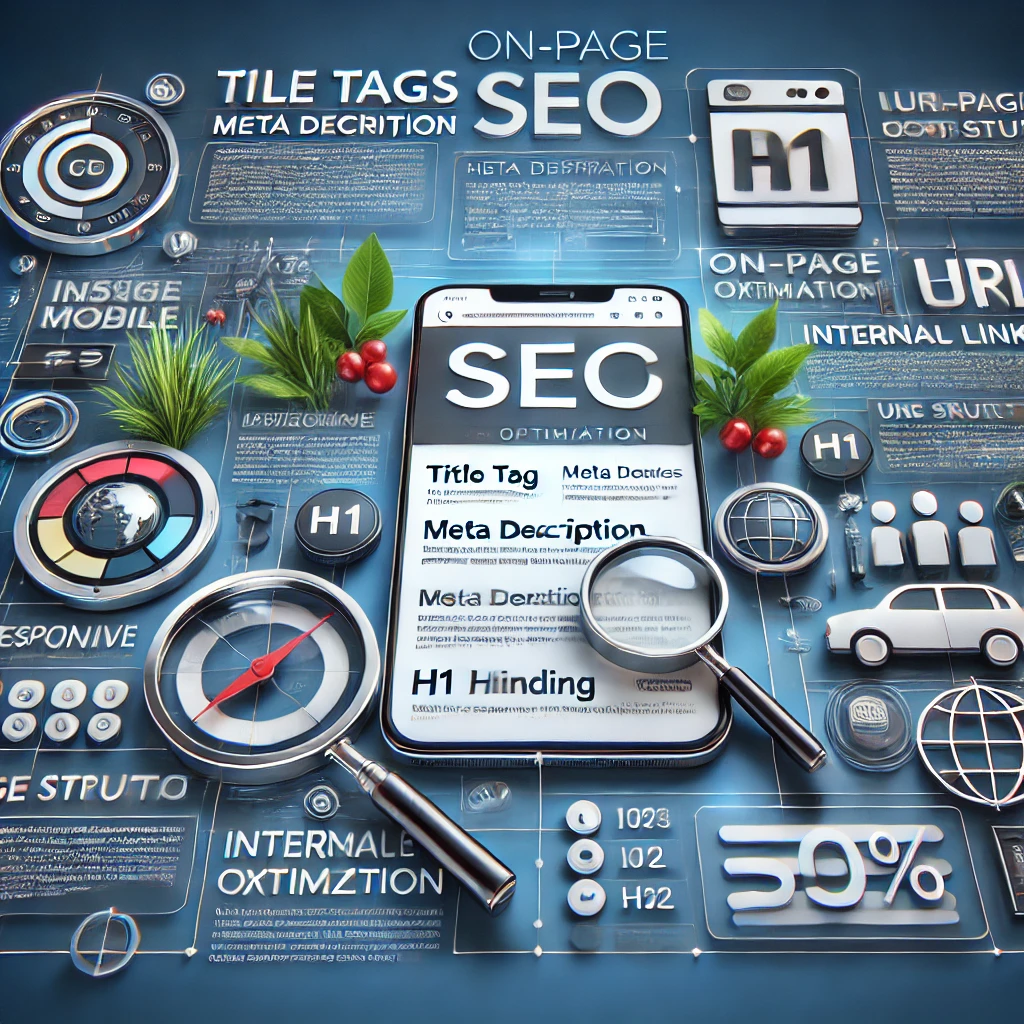In the ever-evolving landscape of digital marketing, on-page SEO remains a cornerstone for achieving high search engine rankings. Whether you’re a seasoned professional or just getting started, understanding and implementing on-page SEO best practices is crucial for driving organic traffic to your website. This guide will walk you through the essentials of on-page SEO, including actionable tips, recommended tools, and best practices to ensure your content ranks well in search engines.
What is On-Page SEO?
On-page SEO refers to the optimization techniques applied directly on a webpage to improve its search engine ranking. This includes optimizing content, HTML source code, and other elements such as images and internal links. Unlike off-page SEO, which focuses on external signals like backlinks, on-page SEO is entirely within your control.
Why is On-Page SEO Important?
Effective on-page SEO helps search engines understand the context and relevance of your content. It also enhances user experience, which is increasingly important as search engines like Google prioritize user-centric content. By mastering on-page SEO, you can ensure that your website not only ranks higher but also provides value to your visitors, leading to better engagement and conversion rates.
Key Elements of On-Page SEO
1. Title Tags
The title tag is one of the most critical elements of on-page SEO. It tells search engines and users what your page is about. A well-optimized title tag should:
- Be between 50-60 characters long.
- Include your target keyword at the beginning.
- Be compelling enough to encourage clicks.
Example: Instead of “Welcome to Our Website,” use “Affordable Web Design Services | YourCity.”
2. Meta Descriptions
While meta descriptions don’t directly impact rankings, they play a significant role in click-through rates. A good meta description should:
- Be between 150-160 characters.
- Include the target keyword.
- Provide a concise summary of the page content.
- Include a call-to-action (CTA) to encourage clicks.
Example: “Discover affordable web design services in YourCity. Get a free consultation today and bring your business online with our expert team!”
3. Headings (H1, H2, H3, etc.)
Headings help structure your content, making it easier for both users and search engines to understand. The H1 tag should represent the main topic of the page, while H2, H3, etc., should break down the content into subtopics.
- H1: Use only one H1 tag per page and include your primary keyword.
- H2/H3: Use these for subheadings and include variations or related keywords.
4. URL Structure
A clean, descriptive URL structure improves both user experience and SEO. Your URLs should:
- Be concise and easy to read.
- Include the primary keyword.
- Use hyphens to separate words.
Example: Instead of “www.example.com/page?id=123,” use “www.example.com/affordable-web-design.”
5. Content Optimization
Content is the heart of on-page SEO. High-quality, relevant content not only attracts visitors but also signals to search engines that your page is authoritative. Key points to consider:
- Keyword Usage: Naturally integrate your target keywords into the content without keyword stuffing. Aim for a keyword density of 1-2%.
- LSI Keywords: Use Latent Semantic Indexing (LSI) keywords—terms related to your primary keyword—to provide context.
- Content Length: Longer content tends to rank better, but ensure it’s comprehensive and valuable to the reader.
- Readability: Use short paragraphs, bullet points, and simple language to make your content easy to read.
6. Internal Linking
Internal links help distribute page authority across your site and guide users to related content. Best practices include:
- Linking to relevant pages using anchor text that includes keywords.
- Ensuring a logical flow between linked pages.
- Avoiding excessive linking that can overwhelm users.
7. Image Optimization
Images enhance user experience but can also slow down your site if not optimized. Key tips include:
- Alt Text: Use descriptive alt text that includes the keyword.
- File Names: Rename images with relevant keywords before uploading.
- Compression: Use tools like TinyPNG to compress images without losing quality.
8. Mobile-Friendliness
With mobile traffic surpassing desktop, ensuring your site is mobile-friendly is crucial. Google uses mobile-first indexing, meaning it primarily crawls and indexes the mobile version of your site. Tips for mobile optimization include:
- Using responsive design.
- Ensuring fast loading times on mobile.
- Simplifying navigation for smaller screens.
9. Page Speed
Page speed is a critical ranking factor. Slow-loading pages frustrate users and lead to higher bounce rates. Improve your page speed by:
- Minimizing HTTP requests.
- Leveraging browser caching.
- Compressing files and images.
- Using a Content Delivery Network (CDN).
Essential Tools for On-Page SEO
- Google Search Console: Monitor and optimize your website’s performance in Google search results.
- Yoast SEO: A popular WordPress plugin for on-page SEO optimization.
- Ahrefs: Provides detailed insights into your site’s SEO, including keyword rankings and backlink profiles.
- Screaming Frog: A website crawler that helps identify on-page SEO issues.
- GTmetrix: Analyzes your website’s speed and provides actionable recommendations for improvement.
Best Practices for On-Page SEO
- Regularly Update Content: Keep your content fresh and relevant to maintain or improve rankings.
- Monitor Analytics: Use tools like Google Analytics to track your site’s performance and adjust your strategy accordingly.
- Optimize for Voice Search: As voice search becomes more prevalent, optimize your content for natural language queries.
- Focus on User Intent: Understand the intent behind search queries and create content that fulfills it.
- Stay Current with SEO Trends: SEO is constantly evolving, so staying informed about the latest updates and best practices is crucial.
Conclusion
On-page SEO is a fundamental aspect of digital marketing that directly impacts your website’s visibility and performance. By following the tips, tools, and best practices outlined in this guide, you can ensure your website is well-optimized to rank higher in search results and provide an excellent user experience. Remember, SEO is a long-term game, and consistent effort is key to achieving lasting results.


